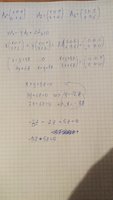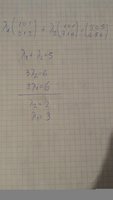The first question asks whether
(560556) is a linear combination of
(100112) and
(130110).
That is, do there exist a and b such that
a(100112)+b(130110)=(a+b3a0a+ba+b2b)=(560556).
And that is the same as asking whether there exist a and b such that a+ b= 5, 3a= 6, 2b= 6. If there are what are a and b?
But it is easy to see that the first two matrices are linearly independent since one is not a multiple of the other. So the subspace spanned by those two matrices is 2 dimensional, all such matrices being of the form
a(100112)+b(130110).
"
R2x3", the space of all 2 by 3 matrices, consists of all matrices of the form
(adbecf). That contains 6 independent numbers so is of dimension 6. Find each of the 6 basis matrices by taking each of a, b, c, d, e, and f to be 1 and the others 0. Two such basis matrices are
(100000) and
(001000)
For the last one, every complex number can be constructed from two real numbers so
C23 has dimension 2(6)= 12. There are 12 basis matrices. Two of them are Two such basis matrices are
(100000) and
(i00000).




